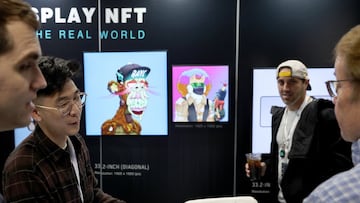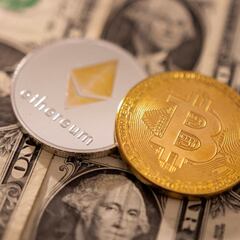How can you make NFT digital art and collections? What are the pros and cons?
The growth of blockchain technology has created a digital system which allows artists to sell virtual products for huge sums of money, but at a significant cost to the environment.


Non-fungible tokens (NFTs) have drawn a lot of attention in recent months as a seemingly endless parade of celebrities, artists and investors push their own versions of the digital commodities.
In a world where most things can be replicated and shared online, NFTs claims to offer an antidote to that, providing a digital product with a finite supply and certifiable rarity. NFTs utilise the same blockchain technology that powers Bitcoin and other cryptocurrencies and have become popular among investors.
However this unregulated structure makes them easily manipulated and the trade of highly-prized NFTs for huge sums of money has been described as a Ponzi scheme. Eriana Ura-Smith, a painter and illustrator from California, describes NFTs as a “hyper capitalist exercise that is creating scarcity where none exists and using art as a vehicle to do so.”
Read more
- Neymar's million-dollar NFT investment
- How are NFTs created? Why is bad their impact on environment?
- PGA Legend Tiger Woods is the latest athlete to release NFTs
- What does NFT mean? What is it and what's an example of it?
Another criticism of NFTs comes from those who argue that the blockchain technology which maintains the network of digital artwork has an enormous carbon footprint and could become a significant contributor to climate change.
A report from The New York Times claims that the creation of an average NFT brings with it ”over 200 kilograms of planet-warming carbon, equivalent to driving 500 miles in a typical American gasoline-powered car.”
How are NFTs made?
The unique collectible assets have been put forward as a way for artists to make a living from their work in the digital age. The supposed guarantee of scarcity aims to create a digital product that can become as valuable as a prized work of physical art.
And, in financial terms at least, certain artists have managed to do this. Last year an artist known as Beeple sold a digital collage entitled Everydays: The First 5000 Days for $69 million at prestigious British auction house Christie’s.
Ready to show off your NFT? Follow these simple steps to connect your crypto wallet and let’s see your NFT PFPs! pic.twitter.com/epSL7VXG5o
— Twitter Blue (@TwitterBlue) January 20, 2022
This sale saw Beeple place “among the top three most valuable living artists,” according to a press release from Christie’s. However the actual process for creating an NFT is fairly straightforward…
1. Select an artwork – NFTs start off as a unique digital asset that the owner wishes to commodify. If an artist has a picture, song, meme, GIF or any other digital product they are the sole owner of, it can be converted into an NFT.
2. Pick a blockchain – As mentioned, NFTs are hosted using blockchain technology and different systems provide different levels of service. Most creators base their NFTs on Ethereum, but the likes of Tezos, Polkadot and Cosmos are also available.
3. Create a digital wallet – Blockchain technology underpins the NFT universe so you will need to set up a digital wallet in which you can store your digital assets. AlphaWallet, Trust Wallet, and Coinbase Wallet are among the most popular.
Related stories
4. Choose a marketplace – Once minted, artists need somewhere to sale their wares and that can be done on a whole host of NFT marketplaces. Different marketplaces tend to specialise in different things and some are dedicated to one type of artwork, like the basketball-focused NBA Top Shot.
5. Decide on a sales method – After the NFT has been minted and uploaded to a marketplace, the only thing remaining is to pick the terms of the sales process for any interest customers. Generally this is either selling the NFT at a fixed price; setting a time-defined auction; or starting an unlimited auction which the artist can choose to end whenever they wish.

